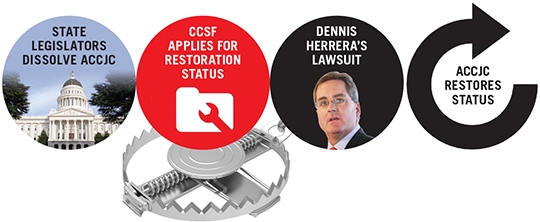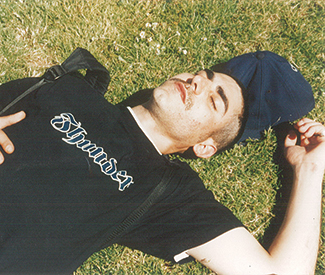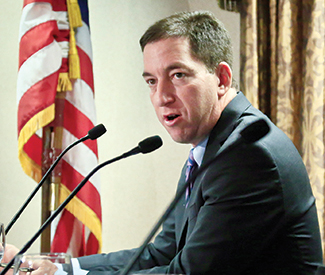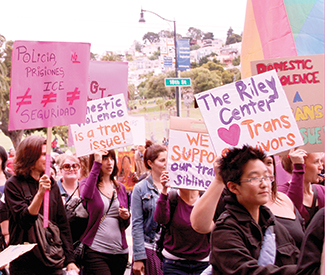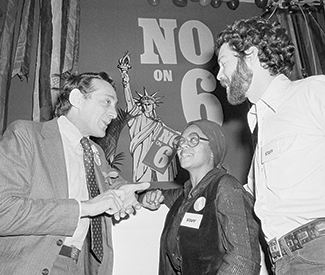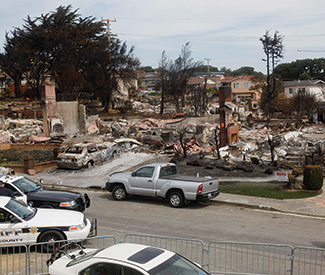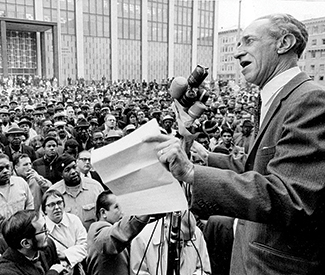STREET FIGHT With most city officials supporting the accommodation of private transit in some form, the San Francisco Municipal Transportation Agency is now vetting where tech workers should board and egress the private corporate commuter buses that ply the 101 and I-280 between San Francisco and Silicon Valley suburbs. A list of proposed bus stops was circulated in June, and the first round of bus stop proposals is set for approval in August.
Short of a proper environmental study, which is the subject of ongoing litigation, the list deserves more scrutiny and deliberation because certain areas of the city — such as Hayes Street in the Western Addition and 18th Street in the Mission — might be effectively made into Google Bus sewers.
I hope SFMTA is open to reconsidering some of these proposed bus stops.
Rather than jamming oversized interstate highway-scale coaches on human-scaled, walkable, and bikeable streets with important Muni routes, SFMTA ought to steer them where they are more appropriate: on the wider, car-oriented streets that bifurcate the city.
For example, the current proposal for private commuter buses in the Western Addition is to have these mammoth and incongruent buses running on Hayes Street using Muni stops at Clayton, Steiner, Laguna, and Buchanan.
This is bad news for passengers on the 21-Hayes, a key neighborhood-serving electric trolley bus that has gotten short shrift in the city planning process. With 12,500 boardings daily, the 21-Hayes is often at capacity every morning before it crosses Van Ness.
Just last week, I was on a packed 21 that was blocked (illegally) by a huge corporate bus on Hayes. With an already dense and slow traffic situation, this added at least 30 seconds to the trip before the 21 could access its stop. Repeat that multiple times in the morning and afternoon and you can see that this will be a mess. It’s not worth the dollar the SFMTA collects for such stops, that’s for sure.
Concentrating the private buses on the 21 line (or the 33 in the Mission) will block Muni where Muni is already slow, unreliable, and overcrowded. It will also diminish walkability and bicycle safety on Hayes and other streets identified in the current list (including the commercial corridors on Divisadero and 18th Street in the Mission.)
Rather than streets such as Hayes, SFTMA should redirect the private buses to the multilane, one-way couplet on Fell and Oak streets, only one block south. Along the corridor, SFMTA could collaborate with the private systems to establish new bus stops (red paint) at Clayton, Masonic, Divisadaro, Fillmore, and near Octavia. This scheme would limit clunky turn movements onto neighborhood streets by oversized buses and contribute to traffic calming.
In the mornings, the buses would pick up passengers on Oak Street, starting along the Panhandle, then travel towards Octavia Boulevard before swinging onto the freeway southbound. In the evenings the buses would exit the freeway at Octavia, and stop at drop-off hubs on Fell, between Octavia and Laguna, and then stop incrementally toward Golden Gate Park.
Additionally, the city needs to consider a space for the underpaid, nonunionized drivers to pull over and rest before and after long segments of freeway driving. We want these buses to be safe.
Similar arrangements should be made to spare 18th Street in the Mission from reverting to a Google bus sewer, with emphasis on private corporate bus stops on South Van Ness or Guerrero-San Jose. Surely there are other examples in other parts of the city.
The urgent affordable housing crisis aside, this could be a win-win from a transportation perspective. Tech workers would no longer get blamed for blocking Muni and they can know that while waiting for their bus, they are contributing to calming erstwhile hazardous streets.
There’s a lot of opportunity to combine these new bus stops with traffic calming at dangerous intersections such as Fell and Masonic or Oak and Octavia, all without mucking up Muni or diminishing the walkable human scale of nearby neighborhood commercial streets. And hey, since this is all a “pilot program,” no pesky and expensive EIR is needed — right?
Thinking long-term, this scheme could be a template to jumpstart making this ridiculous private transit system into a regional public bus system modeled on AC transit or Golden Gate Transit, a service open to all. Our car-centric streets are ripe for express bus service and this would help relieve parallel lines like the N-Judah, while enabling the city to attain its aspiration of 30 percent mode share on transit.
And for Mayor Ed Lee and pro-tech-bus members of the Board of Supervisors, it helps with their “vision zero” rhetoric of increasing pedestrian safety because placing the buses on car-centric one-way couplets can help calm traffic.
With a little cajoling by the mayor, he could get his tech sponsors to underwrite streetscape and beautification at the bus stops along these kinds of streets.
After all, Mayor Lee needs to find the money, because last month he betrayed pedestrian and bicycle safety and Muni when he abandoned support for increasing the Vehicle License Fee locally this fall, all the while misleading the public about the important role of Sunday metering. Perhaps it’s time for a tax or license fee on the ad hoc private transit system?
SLOWING DOWN
Speaking of vision zero, Sup. Eric Mar deserves hearty thanks for proposing to reduce speed limits citywide. This is one of the most effective ideas to come from the progressive wing of the Board of Supervisors in a long time and should be implemented yesterday. Higher speeds maim and kill, and the faster cars go the more voracious the appetite for both fuel and urban space.
With reduced speed, the motorist would still be able to drive, just more slowly, perhaps with less convenience than now. But over time the options of cycling, of walkable shopping, and improved public transit would synchronize more seamlessly as car space is ceded to separated cycletracks and transit lanes.
My suggestion is to make the city navigable by car at no greater than 15 miles per hour, a speed deemed not only to be comfortable on calmed pedestrian streets, but also to minimize injury and fatalities when there are collisions. Ultimately, our efforts to curb global warming, reduce injury and death from automobility, and make the city more livable obliges us to slow down, so looking at speeds is a step forward.
Street Fight is a monthly column by Jason Henderson, a geography professor at San Francisco State University and the author of Street Fight: The Politics of Mobility in San Francisco.



